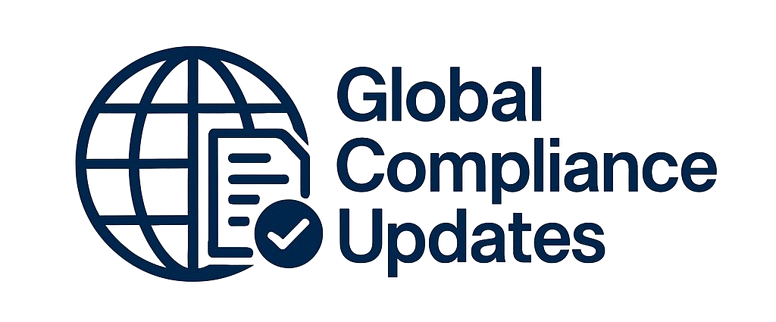Learn the latest trends in emerging technology related to electronic information gathering and how this new technology affects KYC and CDD/EDD information gathering and verification. This training will provide attendees with the latest guidance and information from financial regulators and FinCEN.
WHY SHOULD YOU ATTEND?
In recent years the increased use of electronic means to obtain customer signatures, to conduct verification of customer information, and to conduct overall customer due diligence has posed problems for financial institutions to fully comply with KYC, CDD/EDD requirements. This webinar will discuss methods of using electronic means for these activities and will discuss up-to-date guidance provided by FinCEN and financial regulators in the use of electronic platforms for these processes.
Staff and employees of financial institutions need to be aware of the latest trends in emerging technology related to electronic information gathering, the methods used and the risks associated with this type of information gathering. This presentation will allow attendees to obtain background information on how this new technology affects KYC and CDD/EDD information gathering and verification, it will explain to attendees how this new technology is constantly changing, and provide attendees with the latest guidance and information from financial regulators and FinCEN.
AREA COVERED
- FinCEN regulations and guidelines related to electronic information gathering
- FFIEC and other regulatory requirements and guidance
- Items to include in your electronic information gathering policies, procedures, and practices
- Current industry standards and business norms related to electronic information gathering
- Recent enforcement actions related to weak programs and practices
- Proposed future issues related to electronic information gathering
LEARNING OBJECTIVES
- An overview of FinCEN and regulatory requirements and guidance related to electronic information gathering
- Defining exactly what constitutes an E-Signature, and E-Verification, and E-CDD/EDD
- Common mistake financial institutions make related to electronic information gathering
- Internal controls needed to ensure that electronic information gathering complies with AML/CFT laws and regulations
- Needed additions to KYC and CDD/EDD policies, procedures, and practices to improve current bank guidance
- Regulatory expectations for compliance with electronic information gathering
WHO WILL BENEFIT?
Banks and Money Service Businesses will benefit from this training. The following titles should attend:
- Front line BSA/AML staff
- Account opening staff
- Risk managers
- BSA/AML Officers
- Compliance Officers
- BSA/AML Audit staff
- Broker/Dealers
- Auditors
- BSA/AML Consultants
- SAR decision makers
- Risk Managers
In recent years the increased use of electronic means to obtain customer signatures, to conduct verification of customer information, and to conduct overall customer due diligence has posed problems for financial institutions to fully comply with KYC, CDD/EDD requirements. This webinar will discuss methods of using electronic means for these activities and will discuss up-to-date guidance provided by FinCEN and financial regulators in the use of electronic platforms for these processes.
Staff and employees of financial institutions need to be aware of the latest trends in emerging technology related to electronic information gathering, the methods used and the risks associated with this type of information gathering. This presentation will allow attendees to obtain background information on how this new technology affects KYC and CDD/EDD information gathering and verification, it will explain to attendees how this new technology is constantly changing, and provide attendees with the latest guidance and information from financial regulators and FinCEN.
- FinCEN regulations and guidelines related to electronic information gathering
- FFIEC and other regulatory requirements and guidance
- Items to include in your electronic information gathering policies, procedures, and practices
- Current industry standards and business norms related to electronic information gathering
- Recent enforcement actions related to weak programs and practices
- Proposed future issues related to electronic information gathering
- An overview of FinCEN and regulatory requirements and guidance related to electronic information gathering
- Defining exactly what constitutes an E-Signature, and E-Verification, and E-CDD/EDD
- Common mistake financial institutions make related to electronic information gathering
- Internal controls needed to ensure that electronic information gathering complies with AML/CFT laws and regulations
- Needed additions to KYC and CDD/EDD policies, procedures, and practices to improve current bank guidance
- Regulatory expectations for compliance with electronic information gathering
Banks and Money Service Businesses will benefit from this training. The following titles should attend:
- Front line BSA/AML staff
- Account opening staff
- Risk managers
- BSA/AML Officers
- Compliance Officers
- BSA/AML Audit staff
- Broker/Dealers
- Auditors
- BSA/AML Consultants
- SAR decision makers
- Risk Managers
Speaker Profile
 Thomas Nollner
Thomas Nollner
Thomas E Nollner has more than 35 years of experience in financial institution supervision and consulting. Mr. Nollner spent 30 years as a National Bank Examiner for the Comptroller of the Currency where he was a safety and soundness examiner and a compliance examiner. As a safety and soundness examiner he examined national banks for capital adequacy, asset quality, management issues, earnings concerns, and liquidity funding. As a compliance examiner, he examined national banks for compliance with consumer laws and regulations such as the Truth-in-Lending Act, the Real Estate Settlement Procedures Act, the Flood Disaster Protection Act, the Community Reinvestment …
Upcoming Webinars

ChatGPT and Project Management: Leveraging AI for Project M…

Workplace Investigations 101: How to Conduct your Investiga…

Project Management for administrative professionals

The Monte Carlo Simulations in Excel for Risky Investments

Onboarding is NOT Orientation - How to Improve the New Empl…

Dealing With Difficult People: At Work & In Life

Transform Data into Insights: A Beginners Guide to Excel Pi…

Construction Lending And Real Credit Administration: Evalua…

Understanding Accounting for non - Accounting professionals

Harassment, Bullying, Gossip, Confrontational and Disruptiv…

New Form 1099 Reporting Requirements: 2025 Compliance Update

Human Error Reduction Techniques for Floor Supervisors

HR Metrics and Analytics 2025 - Update on Strategic Plannin…

Treating Employees Like Adults: Discipline versus Empowerme…

7 Ways To Beat Burnout: Without Quitting Your Job


How to Write Procedures to Avoid Human Errors

Handbook Overhaul 2026: Compliance, OBBB Act & Beyond

FDA Proposes Framework to Advance Credibility of AI Models

Ethical Terminations: Navigating Employee Exits with Legal …

Understanding EBITDA – Definition, Formula & Calculation

Project Management for Non-Project Managers - Scheduling yo…

4-Hour Virtual Seminar on Hidden Secrets of Selling & Marke…

Validation Statistics for Non-Statisticians

Data Integrity and Privacy: Compliance with 21 CFR Part 11,…


The Alphabet Soup: When the FMLA, ADA, COBRA, and Workers' …

Talent Management: How to Leverage AI and ChatGPT Tools for…


Offboarding with Care: Conducting Legal & Ethical Employee …

2-Hour Virtual Seminar on How to Conduct an Internal Harass…

Payments Fraud Detect & Prevent Check, ACH and P-Card Schem…

Managing Toxic & Other Employees Who have Attitude Issues



Reduce Stress in the Workplace: Effective Ways to Handle Co…





Excel - Pivot Tables - The Key To Modern Data Analysis and …
